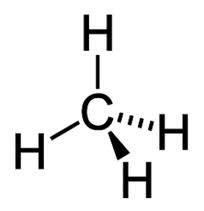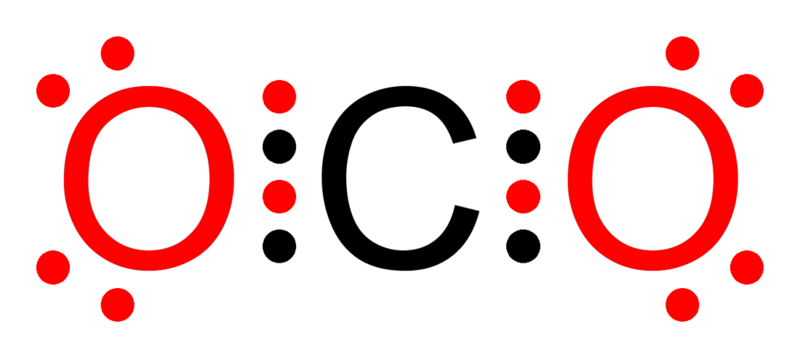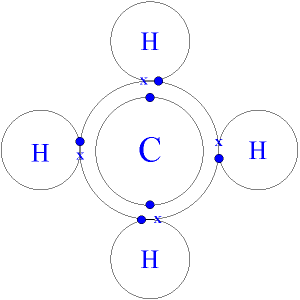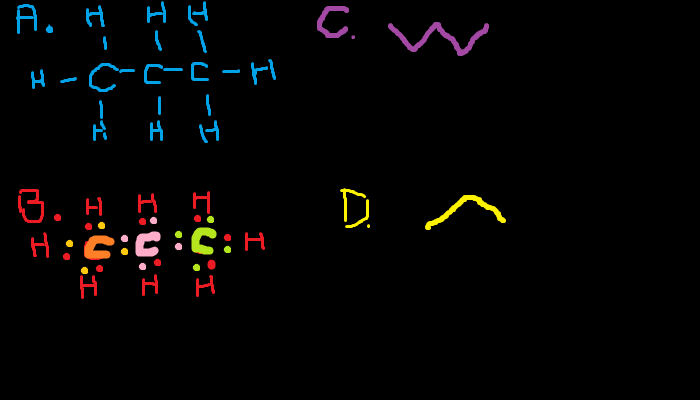Representing Structures Of Organic Molecules

This quiz focuses on the representation of organic molecular structures, testing understanding of electron configurations, the octet rule, and electron counts in bonds and molecules, crucial for students in advanced chemistry courses.
- 1.
Any atom, other than hydrogen and helium wants to "feel" like it has ___ electrons.
- A.
8
- B.
6
- C.
2
- D.
10
Correct Answer
A. 8Explanation
Any atom, other than hydrogen and helium, wants to "feel" like it has 8 electrons because atoms tend to be most stable when they have a full outer electron shell. This is known as the octet rule. By having 8 electrons in its outer shell, an atom achieves a configuration similar to the noble gases, which are highly stable. This stability is desirable for atoms as it reduces their reactivity and makes them less likely to form chemical bonds.Rate this question:
-
- 2.
The fact that atomic bonds tend to be most stable when atoms in the bond have 8 electrons in their valence shells is called the:
- A.
Rule of eights
- B.
Octet rule
- C.
Octagonal bonding scheme
- D.
"I want 8 electrons more than you want cake" rule
Correct Answer
B. Octet ruleExplanation
The octet rule states that atomic bonds are most stable when atoms in the bond have 8 electrons in their valence shells. This is because having 8 electrons in the outermost energy level, also known as the octet, results in a full valence shell similar to the noble gases. This configuration provides stability to the atom and reduces its reactivity. Therefore, the octet rule is a fundamental principle in understanding chemical bonding and predicting the behavior of atoms in forming compounds.Rate this question:
-
- 3.
State the number of electrons in this bond: O=O
- A.
2
- B.
1
- C.
4
- D.
12
Correct Answer
C. 4Explanation
The given bond is a double bond between two oxygen atoms (O=O). In a double bond, two pairs of electrons are shared between the atoms. Therefore, there are a total of 4 electrons involved in this bond.Rate this question:
-
- 4.
How many valence shell electrons does the middle carbon have in the following structure: C-C-C
- A.
2
- B.
4
- C.
6
- D.
8
Correct Answer
D. 8Explanation
In the given structure, each carbon atom is connected to three other atoms. Since carbon has four valence electrons, it shares one electron with each of the three neighboring atoms, leaving one valence electron unshared. Therefore, the middle carbon atom in the structure has 8 valence shell electrons.Rate this question:
-
- 5.
How many electrons does the carbon in methane have, including the hydrogen electrons it covalently shares?image credit: http://portal.lions.k12.ar.us/tjones/physci/Photos/Methane-Molecule.gif
- A.
10
- B.
4
- C.
8
- D.
2
Correct Answer
A. 10Explanation
The carbon in methane has 4 valence electrons of its own, and it forms 4 covalent bonds with hydrogen atoms, each sharing 1 electron. Therefore, the carbon in methane has a total of 4 + 4(1) = 8 electrons from its own valence shell and the electrons it shares with hydrogen. Additionally, carbon also has 2 inner shell electrons. So, the total number of electrons that the carbon in methane has is 8 + 2 = 10.Rate this question:
-
- 6.
How many carbons are in this molecule?
Correct Answer
5
fiveExplanation
The correct answer is 5 or "five" because the question is asking for the number of carbons in the molecule. Both "5" and "five" represent the numerical value of 5, which indicates the number of carbon atoms in the molecule.Rate this question:
- 7.
Which of these depictions accurately represents propane, the 3-carbon single-bonded molecule?
- A.
A.
- B.
B.
- C.
C.
- D.
D.
Correct Answer(s)
A. A.
B. B.
D. D.Explanation
The question asks for the depiction that accurately represents propane, which is a 3-carbon single-bonded molecule. The answer options A, B, and D all show a molecule with 3 carbon atoms connected by single bonds, which is the correct representation of propane. Therefore, the answer A., B., D. is correct.Rate this question:
-
Quiz Review Timeline +
Our quizzes are rigorously reviewed, monitored and continuously updated by our expert board to maintain accuracy, relevance, and timeliness.
-
Current Version
-
Mar 21, 2023Quiz Edited by
ProProfs Editorial Team -
Mar 09, 2011Quiz Created by
Khanacademy






